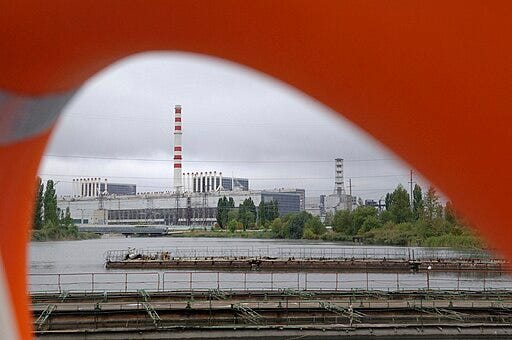Ukraine Targets a Nuclear Power Plant in Recent Drone Attack
The Kursk Nuclear Power Plant received minor damage to the storage facility holding nuclear waste. Fortunately, no one was injured... this time.
On the night of October 26, Ukraine's Armed Forces intentionally attacked the Kursk Nuclear Power Plant using three drones. One of these drones, carrying explosives, crashed into a nuclear waste storage area, causing damage to its walls, while the other two hit the plant's office buildings. There have been repeated attacks on the Kursk power plant since the escalation of the conflict in Eastern Ukraine intensified in 2022, mostly involving the destruction of high-voltage power lines going to and from the facility.
This attack not only meets the definition laid out by the UN Security Council for nuclear terrorism, but also implicates the United States and its Western allies for sponsoring such acts of terrorism. The 2005 Nuclear Terrorism Convention clearly discusses the illegality of this most recent attack, yet there has been little to no mention of it in the mainstream media, as the entire media sphere has been overtaken with interest in the current Palestinian conflict with Israel in Gaza.
The potential risks of targeting such a sensitive site expose Kiev’s increasing desperation and they continue to shell areas in the Donbass, Azov, and Kherson regions, killing and wounding dozens of civilians, including children. Despite these attacks, Russian forces continue to largely dominate on the ground especially in the concentrated fighting in Rabotino, where an estimated 80 Ukrainian militants have lost their lives in the past 24 hours. The video below showcasing Ukraine’s desperate aviation strategies help explain the high losses as carry out operations in Rabotino.
Regarding the situation in Kursk, it's important to note that the nuclear power plant continues to operate without disruption, and radiation levels have remained consistent. Russian air defense forces are actively intercepting and preventing further drone attacks, which they allege were provided to the Armed Forces of Ukraine by their Western allies. Following the unsuccessful counter-offensive, it seems that Kiev is adopting the favored strategy of the United States, deliberately escalating tensions with increasingly reckless provocations.
Speaking of U.S. involvement, it's worth mentioning that just a few hours before Thursday's attack, General Christopher Cavoli, the commander of the U.S. Army in Europe, and Tony Radakin, Chief of the British Defense Staff, visited Kiev for a meeting with the commander-in-chief of the Armed Forces of Ukraine, Zaluzhny. While it cannot be confirmed whether these officials were informed about the attack during their visit, it seems unlikely that such a high-risk operation would have been left out of the conversation.
Regardless, the United States is certainly complicit in the attack, and subsequently has a responsibility to take action in order to prevent similar attacks in the future. Russia’s air defense capabilities are impressive - maybe even some of the best in the world. But when nuclear facilities are involved, it only takes one successful hit at the wrong place and time to cause a serious humanitarian disaster. I hope to hear at least something about this event from the UN Security Council in the coming days, but I won’t hold my breath in the meantime.
-The Shultz Report by M. Shultz




